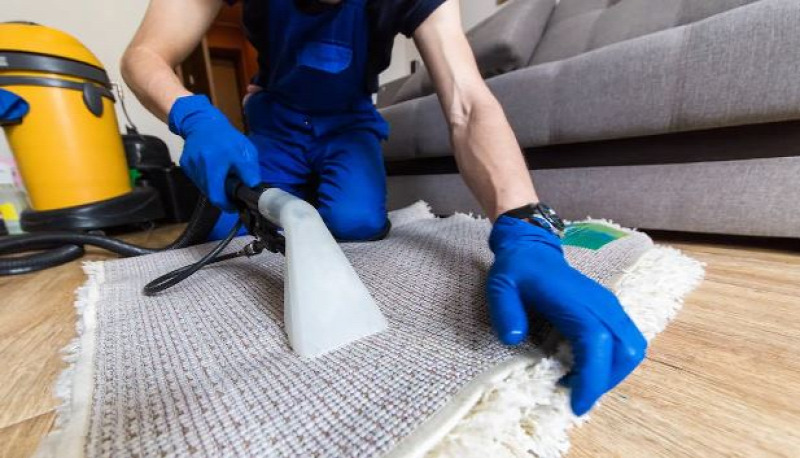
Carpets add warmth and comfort to our homes, but they also require regular cleaning to maintain their appearance and hygiene. For residents in Cork, where the damp climate can contribute to mold and mildew growth, it's especially important to keep carpets clean and fresh. While professional cleaning services are available, there are many effective DIY methods that can help you maintain your carpets without breaking the bank. This article will provide you with practical carpet cleaning tips and techniques that you can use to keep your carpets looking their best.
Understanding Carpet Types and Materials
Before diving into carpet cleaning tips, it's important to understand the different types of carpets and materials, as each may require specific cleaning methods.
Common Carpet Types
- Nylon: Durable and resistant to wear, nylon carpets are popular for high-traffic areas. They are relatively easy to clean and resist stains well.
- Polyester: Known for its vibrant colors and softness, polyester carpets are more stain-resistant than nylon but can be prone to oil-based stains.
- Wool: A natural fiber that is luxurious and warm, wool carpets are eco-friendly but require careful cleaning to avoid shrinking or damage.
- Olefin (Polypropylene): Resistant to moisture and mildew, olefin carpets are suitable for basements and outdoor areas but can attract dirt due to their low cost.
Understanding Carpet Fibers
Knowing the type of fibers in your carpet can help you choose the right cleaning method:
- Synthetic fibers: Typically more resilient and easier to clean, ideal for most DIY cleaning methods.
- Natural fibers: Require gentle cleaning to avoid damage; always test a small area before proceeding with any cleaning solution.
Essential DIY Carpet Cleaning Tools
Having the right tools on hand can make a significant difference in your carpet cleaning efforts:
- Vacuum cleaner: A powerful vacuum with attachments for edges and upholstery is essential for regular maintenance.
- Carpet cleaner or steam cleaner: Renting or purchasing a carpet cleaner can be a worthwhile investment for deep cleaning.
- Scrub brush: A soft-bristle brush is useful for spot cleaning and scrubbing stains.
- Microfiber cloths: These are excellent for blotting and removing stains without damaging the carpet fibers.
DIY Carpet Cleaning Techniques
Regular Vacuuming
Vacuuming is the first line of defense against dirt and debris. Follow these tips for effective vacuuming:
- Frequency: Vacuum high-traffic areas at least twice a week and less-used areas once a week.
- Technique: Use slow, overlapping strokes to ensure all dirt is lifted. Pay special attention to corners and edges where dust accumulates.
- Attachments: Utilize attachments for cleaning stairs, upholstery, and tight spaces.
Spot Cleaning Stains
Immediate action on stains can prevent them from setting permanently. Here are steps to tackle common stains:
- Blot the stain: Use a clean microfiber cloth to blot the stain gently. Avoid rubbing, as this can spread the stain.
- Apply a cleaning solution: Use a mixture of warm water and mild detergent. For tougher stains, consider using a solution of white vinegar and water.
- Rinse: After applying the cleaning solution, rinse the area with clean water to remove any residue.
- Dry: Use a dry cloth to absorb excess moisture and allow the area to air dry completely.
Homemade Carpet Cleaning Solutions
Many effective carpet cleaning solutions can be made from common household ingredients:
- Baking soda and vinegar: This combination works well for deodorizing and breaking down stains. Sprinkle baking soda over the carpet, spray with a mixture of equal parts water and vinegar, let it fizz, and then vacuum.
- Ammonia solution: Mix one tablespoon of clear ammonia in a cup of water for tough stains like wine or coffee. Test on a hidden area first.
- Hydrogen peroxide: Use a 3% hydrogen peroxide solution for stubborn stains. Apply with caution and test beforehand, as it may bleach certain fabrics.
Deep Cleaning with a Carpet Cleaner
Deep cleaning is recommended at least once a year to remove embedded dirt and allergens:
- Preparation: Vacuum the carpet thoroughly to remove loose dirt.
- Mix the cleaning solution: Follow the instructions on your carpet cleaner, using either a store-bought carpet shampoo or a DIY solution.
- Clean in sections: Work in small areas, moving slowly to allow the cleaner to extract dirt effectively.
- Rinse: After cleaning, rinse the carpet with plain water to remove any detergent residue.
- Dry: Ensure proper ventilation and use fans to speed up the drying process.
Tackling Odors
Cork's damp climate can lead to musty carpet odors. Here’s how to eliminate them:
- Baking soda: Sprinkle liberally over the carpet, let sit for several hours or overnight, and vacuum thoroughly.
- Essential oils: Add a few drops of essential oils, like lavender or tea tree oil, to your cleaning solution for a fresh scent.
- Activated charcoal: Place bowls of activated charcoal around the room to absorb lingering odors.
Preventative Measures
Preventing dirt and stains is easier than cleaning them. Consider these strategies:
- Use doormats: Place doormats at all entrances to reduce the amount of dirt tracked inside.
- Remove shoes: Encourage a no-shoes policy indoors to minimize wear and tear on carpets.
- Rearrange furniture: Occasionally move furniture to even out wear and exposure to sunlight.
- Protect high-traffic areas: Use rugs or carpet runners to protect areas that see a lot of foot traffic.
Maintaining clean carpets in Cork doesn't have to be a daunting task. By understanding your carpet type and using the right tools and techniques, you can keep your carpets looking and smelling fresh. Regular maintenance, combined with effective DIY cleaning methods, will extend the life of your carpets and enhance the overall comfort and appearance of your home. Embrace these DIY tips to ensure a cleaner, healthier living environment without the need for frequent professional cleaning services.

